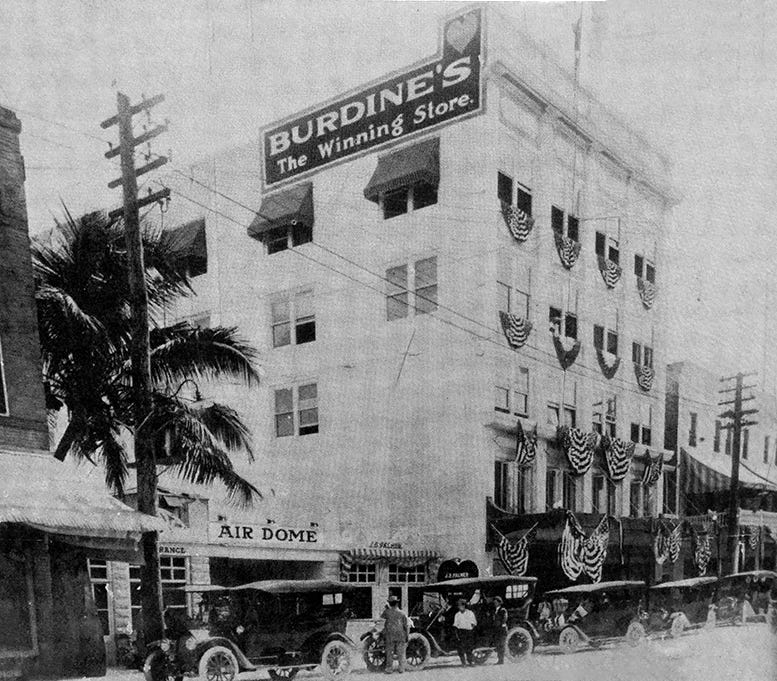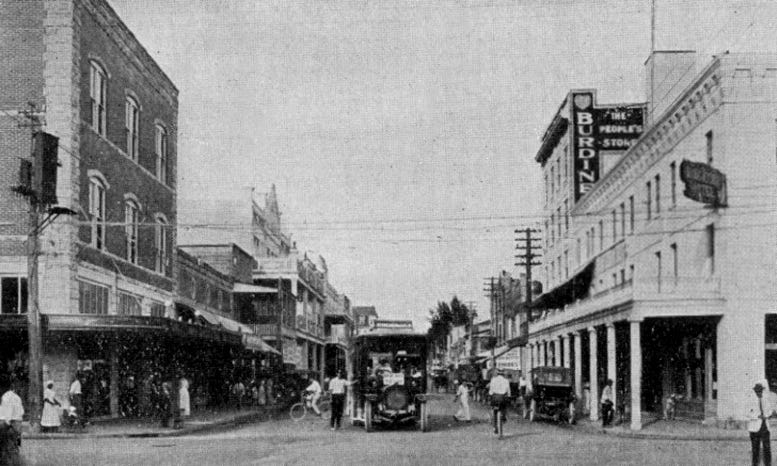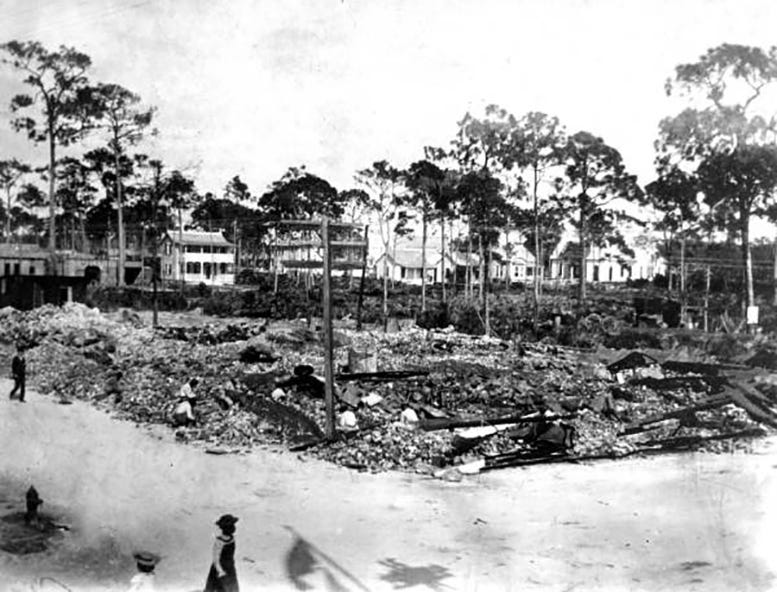Miami Avenue & Flagler Street in 1913
Known as the center point of the grid system address system used today, see what Miami Avenue and Flagler Street looked like in the first decade of the twentieth century.
The photograph features a view at the corner of Avenue D and Twelfth Street in 1913 from the vantage of just west of the intersection facing east. Avenue D was renamed to Miami Avenue, and Twelfth Street to Flagler Street, in 1920 as part of the Chaille Street naming convention, and this intersection became the center point of the grid system used for the Miami street names today.
This article will describe the evolution of this intersection from the turn of the twentieth century until 1913, which is seen in the cover photograph. Downtown Miami evolved dramatically during the first decade of this century, as the photographs in this article will highlight.
North Side of Avenue D & Twelfth Street
The building closest to the corner on the north side (left) of the street, was Budges Hardware. This was the second Budge’s hardware that was built at this location following a fire that burned the prior building to the ground in 1900.
Continuing east on the north side of Twelfth (Flagler) Street, the next set of businesses were the Miami Beef and Miami Grocery Company. Both retail businesses were established by George B. Romfh. The Miami Grocery Company is not the same as T.N. Gautier’s Miami Grocery Store which was located at today’s North Miami Avenue and NW First Street and opened in 1897.
Just east of the Miami Grocery was the New Everglades Hotel. Continuing east was Seybold's Bakery and Ice Cream Parlor. John Seybold would later replace the 1913 building with the Seybold Arcade on the same site. Seybold was also the builder of the Spring Garden sub-division along the Miami River.
In the distance on the north side (left) of the street one could see part of the Halcyon Hotel. The Alfred I Dupont Building now resides where the Halcyon once stood. In the 1913 photo, Dr. James Jackson’s home and office would have been directly east of the Halcyon Hotel.
South Side of Avenue D & Twelfth Street

The building closest to the corner on the south side (right), of the street was primarily occupied by the Hotel Biscayne. However, it did have other tenants. The Biscayne Drug Company and Sewell-Harley Realty were also located in the building.
Moving east along the south side (right) of the street, the next structure was considered the tallest building south of Jacksonville when it was built in 1912. The Burdine Building was five stories in height and consisted of 151,000 square feet. Also in 1912, Roddy incorporated the family business and changed the name to W.M. Burdine’s Sons from Burdines and Sons.
The Burdine Building provided too much square footage for W.M. Burdine's Sons retail operation, so Roddy Burdine rented some of the higher floors to other tenants. A number of professional firms rented office space from Roddy. One notable firm that rented in the Burdine Building in 1913 was Shutts, Smith & Bowen law firm. They rented offices on the fifth floor.

Other businesses on the south side (right) of the photo within view include the Hatchett Building, Arcade Theater and the Atlantic Realty Company. Although not visible in the photograph, beyond the Atlantic Realty Company, was the HT Whaler Company store. Whaler was one of Miami’s first jewelers.
H.T. Whaler also bought Dr. James Jackson’s home and office in 1916 while both buildings were being moved from downtown Miami by barge. Dr. Jackson wanted to preserve his home and office and was in the process of moving them to Miami Beach. However, Whaler ended up buying both buildings and redirected the move to today’s SE Twelfth Terrace in the Brickell neighborhood. The Jackson office still remains at 190 SE Twelfth Terrace where it serves as the office of Dade Heritage Trust.




